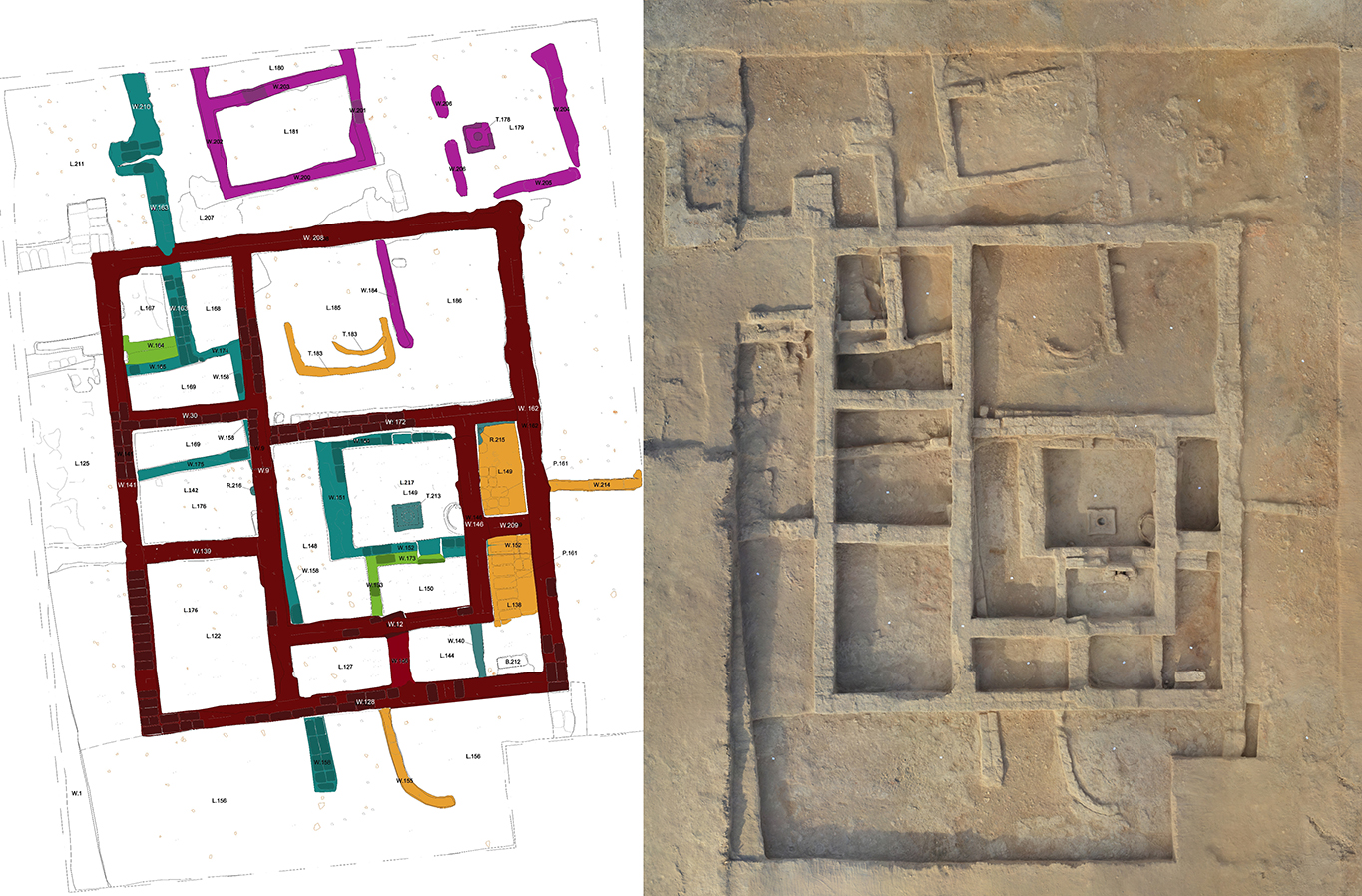- 18th of May 2020
Building no.33 , the house with different parts
AREA 33 2700-2300 BC
Area 33 is located near the large central depression that in the past had to host a small lake inside the settlement. The excavation of the area began in 2017 and has yet to be completed. At the present state of our knowledge 4 archaeological phases have been identified.
Area 33, Stage 1. Building 33. Shahr-i Sokhta III - Phase 4-3: ca. 2450/2400-2350/2300 BC.
Area 33, Stage 2. Squatter occupation. Shahr-i Sokhta III - Phase 5b/4: ca. 2500-2450/2400 BC.
Area 33, Stage 3. House of the Courts. Shahr-i Sokhta II - Phase 5a: ca. 2600-2500 BC.
Area 33, Stage 4. House of the Architect and Eastern Building. Shahr-i Sokhta II - Phase 6: ca. 2700-2600 BC.
The excavations carried out made it possible to recognise a first period of occupation between 2700 and 2500 BC and, after a short period of abandonment (ca. 2500-2400 BC), a new phase of occupation between ca. 2400-2300 BC. Subsequently, the whole area will be definitively abandoned in favour of a new occupation along the central sector of the settlement. The most archaic phase (Stage 4) is characterized by, at least, two architectural complexes of very fine workmanship. Within both of them numerous finds used for administrative accounting have been found. Hundreds of cretulae, seal and seal impressions and other accounting objects have made it possible to reconstruct the administrative cycles inside the buildings. In particular in one of the two complexes ("House of the Architect") about 60 graduated scales were also found. In the next phase (Stage 3) the architectural layout changes radically; the old structures are abandoned and levelled to build a new building ("House of the Courts") whose typology seems to be well inserted in the architectural tradition of Shahr-i Sokhta, as well known in the other areas of the centre, strongly influenced by contemporary Harappan architectural tradition.
This building will be abandoned with the next phase (Stage 2) which is represented by the presence of sporadic and widespread ovens for the processing of bronze in an open area. The most recent phase (Stage 1), very eroded by wind and rain, has returned an articulated building in which it was possible to recognize at least five distinct sectors. The representative one, the residential one, the kitchen one (where more than 30 fragments of alabaster vases were found), the storage one, and, finally, an external one used to keep the animals. The building plan of this late phase seems to show a strong analogy with architectural typologies well known in the more western regions such as Khuzistan (Susa and Choga Zanbil) and the regions just east of the Tigris (Eshnunna).

